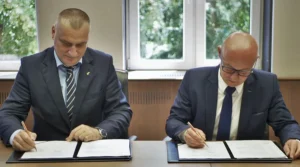What goes on in Poland on the 23rd of April.
The minister confirms. There was a meeting about the future of nuclear power in Poland
The minister of energy has confirmed the reports of BiznesAlert.pl. He informed the journalists that the meeting devoted to the future of the Polish nuclear project actually took place on April 17, as our portal announced. Prime Minister Mateusz Morawicki and scientists took part in it.
– It’s about an ambitious plan one that will last longer that ten years. It’s about financing, or how to provide it, so that depreciation and repayment lasts minimum 50 – 60 years – said Minister Krzysztof Tchórzewski. He emphasized, however, that the talks with scientists were only consultations.
– I would like us to go in the direction of investment, which will last certainly not shorter than 10 years (…) Most financial institutions want the investment to be paid for 20 years, but we want to pay back as much as depreciation lasts. At present, nuclear blocks are amortized for about 60 years, and the new ones up to 80 years. Today, financial institutions are cautiously entering into such investments. So you have to approach this differently – the minister told reporters.
– With advisers and experts, I need to find a solution to ensure that repayment is possible not for 20 years, and a minimum of 50 years, as much as the block is amortized – added Tchórzewski.
A few days ago, the minister said that without the implementation of nuclear energy, Poland would not be able to achieve the CO2 emission reduction targets agreed with the European Commission.
The Syrian crisis sheds new light on energy security in Europe
Before the outbreak of the civil war in spring 2011, Syria was one of the largest oil and gas producers in the Mediterranean region. The tightening of the situation in the hydrocarbon-rich area raises obvious anxiety in international markets, and hence the rise in prices. President Donald Trump is threatening to increase the US military involvement in the conflict that has been going on for years.
As early as in 2010, the production level of Syrian crude oil and natural gas amounted to over 380,000, respectively. oil barrels and 300 million m³ of gas. Over the last seven years, hydrocarbon production in Syria has fallen to a fraction of its pre-conflict value, and the country is no longer able to export oil.
Officially, in 2012, the regime of President Bashar al-Assad was supported by Iran and Russia in the fight against the armed opposition. Over the past few years, Moscow has directed thousands of its military advisers to the fighting area. The risk of a direct military confrontation between the US and Russia in Syria is fueling concerns about ensuring energy security in Europe. In connection with the declarations of President Donald Trump about the possible military reaction to the alleged attacks with the use of chemical weapons near Damascus, the price of oil rose in the global markets. Currently, it is the highest in three and a half years and has already exceeded the amount of USD 72 per barrel.
Russia is currently exporting about 70 percent of oil extracted in its territory to European countries, mainly to the Netherlands, Germany, Poland and Belarus. Foreign oil sales of more than 7 million barrels a day meet more than a third of the demand for this raw material from European OECD members.








